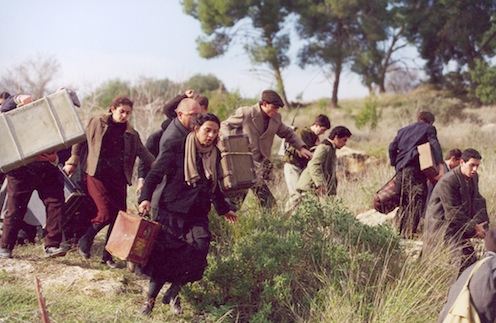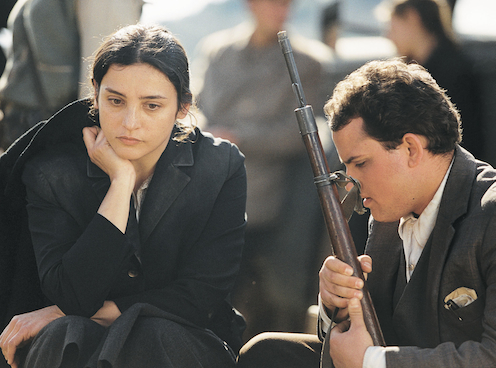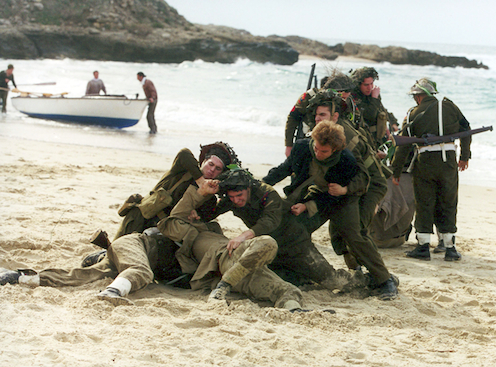Kedma
Full Description
KEDMA follows a decade of nuanced films by Israel's most prolific and internationally renowned director, Amos Gitai. Always sensitive to Israel's complex political concerns, Gitai returns with a tough, anguished reconstruction of an episode in the founding of his nation. The story is set in early May 1948, on the eve of the birth of the state of Israel. The British are about to end their control and tensions are building between the Jewish and Arab communities. The Kedma, a European cargo freighter is packed with concentration camp survivors heading towards Palestine. As underground Jewish forces prepare for its arrival, the British soldiers position themselves to stop the Kedma's unauthorized landing. Gitai's film opens with a long panning shot that creates a mood of anticipation completely without dialogue. The story is told through a series of tableaus that evoke the confusion faced by the refugees as they observe and participate in a war against both the British and the Arabs. And yet, the golden-toned landscapes beckon them with the beauty of the Promised Land. The film gives witness to the displacement of two peoples, those exiled and those who were displaced by them. Shot in late 2000, just as the latest round of violence broke out, it has a recognizable timeliness. Gitai's stories are often from his own personal history; this film reflects the experience of his father-in-law upon his arrival in Palestine. With KEDMA, Gitai honors the survivors and refugees who came to Palestine with their hopes for freedom.
-Janis Plotkin
Filmmaker Bio(s)
For over 20 years, Amos Gitai has brought to the screen images of the Jewish Diaspora and Israeli life alike. Employing both documentary and fictional styles, Gitais uses the camera to reveal history in all its contradictions and ambivalence.
He challenges us, the audience, to scrutinize history anew. Using landscape as a pictorical reference, Gitai traverses time and space to posit not merely a personal experience but a universal one that speaks of migration, struggle and alienation.
In 1973, during the Yom Kippur War, a Red Cross helicopter Gitai was in was shot down by Syrian forces. Following this, Gitai began using his camera as a means of recording and questioning the historical and political events around him. Both his documentaries and his dramatic films present a brutally honest reality, one bejeweled with political conflict, personal plight and a search for meaning. It is a reality that we recognize both as individuals and as members of the larger society.
Amos Gitai was born in Haifa in 1950. Between 1971 and 1975, Amos Gitai studied architecture in the Israel Institute of Technology, and also created his first 8- and 16-mm films. He continued his architecture studies at the University of California in Berkeley where he specialized in the theory of vernacular architecture, and received his Ph.D. in 1986.
In 1977 he began working for Israeli television, where he made several documentaries. After two of his films, Political Myths and House, were censored by the TV authorities, and when Field Diary, shot shortly before and during the Lebanon War, met with much hostility, Gitai moved in 1982, to Paris. From Paris, Gitai continued studying themes of exile, emigration and geography, creating films exceeding the bounds of traditional genre defitions of narrative.
Director(s)
Country(ies)
Language(s)
w/English Subtitle
Release Year
Festival Year(s)
Running Time
100



